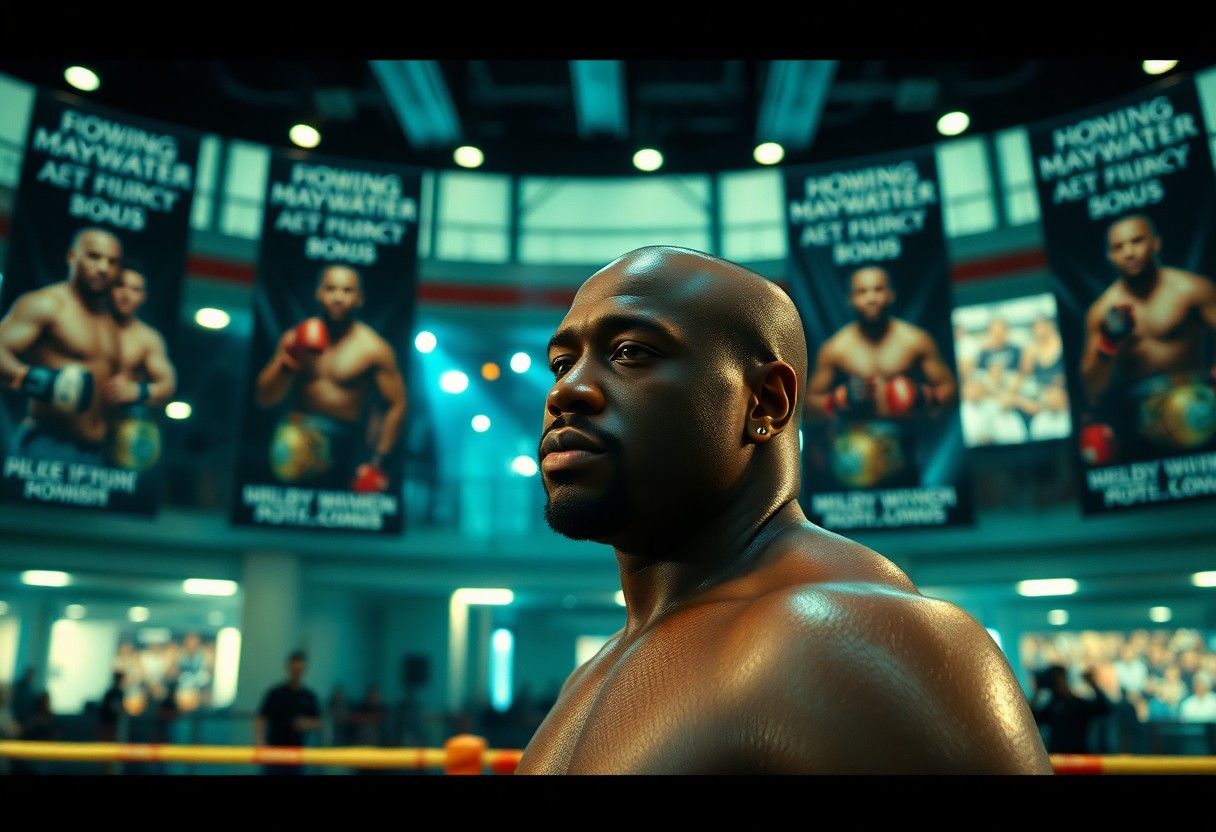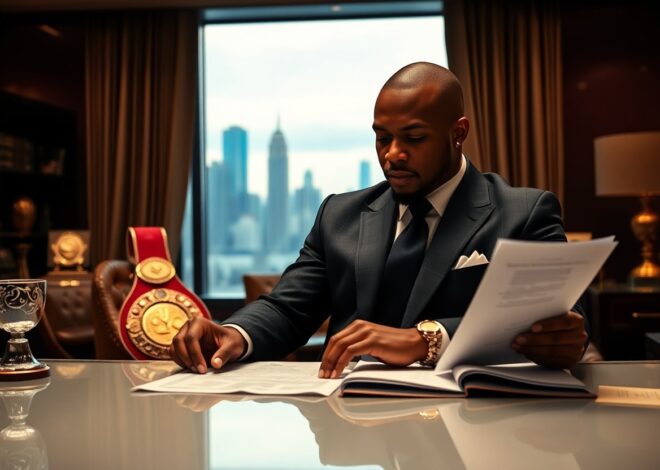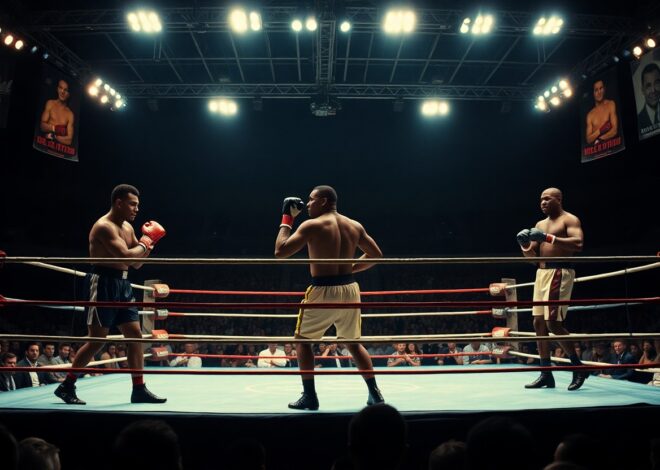
Floyd Mayweather And The Evolution Of Modern Boxing Promotion
Mayweather revolutionized the boxing landscape, transforming it into a multi-faceted entertainment industry. His savvy use of social media, self-promotion, and branding paved the way for fighters to cultivate their own identities and financial success. By leveraging both pay-per-view sales and lucrative sponsorships, he set new standards that have reshaped the business side of boxing. This guide probes into how Mayweather’s approach has influenced today’s fighters and promotional strategies in the modern era.
Types of Boxing Promotion
Boxing promotion has evolved significantly, encompassing various methods to enhance fighter visibility and engagement. Notable types include traditional promotion, modern promotional techniques, and digital marketing strategies, each bringing its unique approach to attracting audiences. The industry has adapted, leveraging everything from grassroots events to global pay-per-view spectacles.
| Type of Promotion | Characteristics |
|---|---|
| Traditional Promotion | Emphasis on print media, television ads, and press tours. |
| Modern Promotion Techniques | Incorporation of social media, influencer partnerships, and real-time engagement. |
| Event Marketing | Focus on creating visually impactful live events. |
| Sponsorship Deals | Partnerships with brands for mutual marketing benefits. |
| Digital Content Creation | Use of video content to promote fighters and events online. |
Traditional Promotion
Traditional promotion relies heavily on print media and television advertising, with fighters often participating in press tours to generate buzz. This approach focuses on widespread visibility, targeting audiences through established channels. Fighters like Mike Tyson exemplified success through this method, leveraging media appearances to captivate fans and boost ticket sales.
Modern Promotion Techniques
Modern promotion techniques have shifted towards a more interactive model, utilizing social media platforms and influencer partnerships to engage fans directly. Promotions now often involve real-time content, behind-the-scenes footage, and audience interactions that foster a deeper connection with fighters. This shift has transformed how promoters and fighters manage their public image, making it vital to adapt to these evolving dynamics.
Modern promotion techniques are characterized by the use of data analytics to customize marketing efforts, engage fans, and build communities around boxing events. Fighters like Canelo Alvarez have thrived by adopting these strategies, utilizing platforms such as Instagram and Twitter to share training routines, personal stories, and directly interact with their fanbase. Furthermore, promotional firms now frequently collaborate with popular influencers, amplifying their reach and creating tailored campaigns that resonate with specific demographics. This approach not only enhances visibility but also establishes loyal followings, necessary for the success of today’s boxing events.
Factors Influencing Boxing Promotion Success
The success of boxing promotion hinges on various factors, including market reach, fighter popularity, strategic partnerships, and media engagement. Promotions that leverage social media effectively can attract larger audiences, while aligning with sponsors enhances financial backing. Promoters must also consider the athletic prowess of fighters and their fan appeal. Aim for a well-rounded approach to capitalize on these strengths. After evaluating different strategies, knowing how to blend these elements is key for reaching new heights.
- Market Reach
- Fighter Popularity
- Strategic Partnerships
- Media Engagement
Market Demand
Market demand plays a pivotal role in boxing promotion, dictating how events are structured and marketed. High-profile fights, such as those involving champions or rising stars, consistently attract large audiences and sponsorship dollars. This demand often fluctuates based on fighter performance, rivalry narratives, and cultural trends, driving promotions to adapt strategies accordingly.
Fighter Branding
Fighter branding is crucial in modern boxing, where a fighter’s image can significantly influence promotional success. Successful fighters, like Floyd Mayweather, cultivate distinct personas that resonate with fans. This branding encompasses not just boxing talent but lifestyle choices, engagement on social media, and public appearances. The best brands encapsulate messages that go beyond the ring, appealing directly to fans and creating loyalty.
Investing in fighter branding enables boxers to create a recognizable identity, attracting diverse sponsorship opportunities. For example, Mayweather’s “Money” persona not only showcased his in-ring capabilities but also his affluent lifestyle, engaging a broader audience. When fighters effectively communicate their values and stories, they form stronger connections with fans. Ultimately, unique branding can transform fighters into cultural icons, maximizing their market value and influence.
Pros and Cons of Boxing Promotion Strategies
| Pros | Cons |
|---|---|
| Increased visibility and fan engagement | Potential for overhyped bouts |
| Higher revenue through pay-per-view sales | Can create unrealistic expectations |
| More sponsorship opportunities | Pressure on fighters affecting performance |
| Expanded market reach through social media | Increased risk of injury due to poor matchups |
| Ability to build brands around fighters | Fan base polarization |
| Promotion of female boxing | Short-lived hype impacting long-term viewership |
| Ability to attract crossover athletes | Shifts focus from skill to theatrics |
| Opportunities for global events | Costs of promotion can be prohibitive |
| Creation of compelling narratives | Potential for ethical concerns |
| Engendering loyalty among fans | Frequent changes in management and strategy |
Advantages
Promotional strategies in boxing significantly enhance visibility and engagement, translating to higher pay-per-view sales, increased sponsorship deals, and broader market reach. For instance, Floyd Mayweather’s elaborate promotional tactics not only built his personal brand but also expanded the sport’s global audience. The rise of social media has made it easier to engage audiences, while compelling narratives around fighters can foster deep fan loyalty.
Disadvantages
However, these promotion strategies are not without drawbacks. They can lead to overhyped matches that disappoint fans and create unrealistic expectations regarding fight outcomes. The pressure placed on fighters to perform, driven by promotional demands, may compromise their performance or well-being. Additionally, a focus on theatrics over skill may alienate purist fans, ultimately risking the sport’s integrity.
A prime example of this lies in the build-up to certain high-profile bouts, where fighters are matched not necessarily based on skill, but rather on marketability, leading to mismatches that can jeopardize fighter safety. Moreover, repetitive hype cycles can cultivate a transient audience, where fans quickly move on to the next hyped event, undermining long-term interest in boxing. Ethical concerns are also looming, as some promotions prioritize profits over the health and safety of their athletes, raising questions about the true cost of modern boxing promotion.
Tips for Effective Boxing Promotion
To maximize success in boxing promotion, consider these strategies: focus on building a personal brand, leverage high-profile partnerships, and engage with fans through interactive events. Utilize strategic marketing techniques, including targeted advertising and experiential marketing, to boost fighter visibility. Authentic storytelling around fighters can create emotional connections and foster loyalty. Perceiving success as a combination of brand influence and grassroots engagement is vital.
Audience Engagement
Engaging the audience is paramount in boxing promotion. Creating unique, relatable content allows fans to develop a connection with fighters and events. Hosting live Q&A sessions, behind-the-scenes footage, and interactive polls on platforms can enhance fan participation. Such efforts boost community involvement, making fans feel integral to the boxing narrative.
Social Media Utilization
Social media serves as a powerful tool in boxing promotion. Fighters and promoters can reach millions globally through platforms like Instagram, Twitter, and TikTok. Consistent posting, engaging content, and influencer collaborations maximize visibility and fan interaction.
Effective social media strategies include regular updates on fight schedules, training sessions, and personal stories from fighters. For example, Floyd Mayweather has mastered this by sharing highlights and engaging with fans in real time, creating a digital persona that compliments his ring presence. Data shows that campaigns utilizing viral content and live interactions lead to increased ticket sales and merchandise revenue, reinforcing the significance of maintaining an active, engaging online presence within the boxing community.
Step-by-Step Guide to Creating a Boxing Promotion Plan
| Stages | Description |
|---|---|
| Initial Planning | Establish goals, budget, and target audience; analyze market conditions and competition. |
| Execution and Follow-Up | Implement marketing strategies, manage logistics, and assess outcomes for future improvement. |
Initial Planning
Effective planning involves defining specific objectives for the promotion while assessing a realistic budget. Analyze the existing market, spotlight similar events, and identify potential fan demographics to tailor your outreach strategies accordingly. Setting clear benchmarks will help measure the promotion’s success.
Execution and Follow-Up
Following the execution of the promotion plan, it’s vital to evaluate performance against the established goals. This involves assessing ticket sales, fan engagement metrics, and social media traction. Key insights should inform adjustments for future promotions, ensuring continuous improvement and alignment with evolving market trends.
For effective execution and follow-up, consider utilizing tools like analytics software to track various metrics post-event. This includes examining ticket sales, social media engagement, and audience feedback. By analyzing different aspects of the promotion, you can make better-informed decisions for your next event. Engaging with your audience through surveys or direct feedback channels will also provide qualitative data, enriching your promotional strategy over time.
The Role of Sponsorship in Boxing Promotion
Sponsorship plays a vital role in the success of boxing promotions, as brands leverage the sport’s popularity to enhance visibility and engagement. The financial backing provided by sponsors often determines the scale of the event, from grand venues to elaborate marketing campaigns. High-profile fights, like those featuring Floyd Mayweather, attract major sponsors, creating a mutually beneficial relationship that elevates both the fighters’ profiles and the brands’ market presence. This interplay between sponsors and boxing promotions has redefined how events are organized and marketed.
Types of Sponsorship
Several types of sponsorship are common in boxing, each serving distinct purposes and benefits.
- Title Sponsorship: Providing primary funding and branding rights, usually featuring the sponsor’s name in the event title.
- Official Merchandise Sponsorship: Involves brands endorsing and supplying gear worn by fighters.
- Broadcast Sponsorship: Brands paying for advertisement slots during televised fights to reach wide audiences.
- Event Sponsorship: Covering overall costs of the event, including venue, promotions, and fighters’ appearances.
- Digital Sponsorship: Engaging audiences online through interactive campaigns and social media promotions.
This diversity allows brands to tailor their involvement in the sport to align with their marketing strategies and reach targeted consumer demographics.
Impact on Brand Visibility
The visibility that boxing sponsorship offers to brands is remarkable. When a brand sponsors a high-profile fight, it gains immediate exposure to millions of viewers, both in the arena and through broadcasts. This level of engagement significantly enhances brand recognition, making sponsors synonymous with the excitement and drama of the sport. Major events, like Mayweather’s championship bouts, draw immense global attention, allowing sponsors to showcase their products in a dynamic environment.
In 2020, a championship fight attracted over 10 million viewers, presenting sponsors with unparalleled opportunities to connect with vast audiences. The combination of live attendance and extensive media coverage amplifies exposure, allowing sponsors to leverage fighter popularity within their campaigns. Brands like Budweiser and EA Sports have effectively harnessed this potential to instill loyalty and recognition among fans. The interconnectedness of boxing events and brand visibility underscores why sponsorship remains a cornerstone in shaping the financial landscape of boxing promotions.
Conclusion
Conclusively, Floyd Mayweather has transformed modern boxing promotion through his strategic branding, mastery of social media, and an unwavering focus on financial success. His approach not only redefined how fighters market themselves but also set new standards for earnings within the sport. By leveraging personal narratives and engaging audiences directly, Mayweather has demonstrated the importance of athlete-driven narratives, ensuring that the evolution of boxing promotion remains inextricably linked to individual personalities and their business acumen.
FAQ
Q: How has Floyd Mayweather influenced the marketing strategies in boxing?
A: Floyd Mayweather has revolutionized boxing marketing by emphasizing brand creation and personal narrative. His use of social media and unique self-promotion tactics, such as “Money Mayweather,” has set a new standard for fighters aiming to cultivate a personal brand and attract a larger audience.
Q: What role do pay-per-view events play in Mayweather’s promotional approach?
A: Pay-per-view events have become central to Mayweather’s promotional strategy, as his fights consistently draw significant audiences. By leveraging his undefeated record and personality, he has created high-stakes events that maximize revenue, establishing a model that modern fighters increasingly emulate.
Q: How has Mayweather’s success affected the financial landscape of boxing promotions?
A: Mayweather’s success has led to increased earnings for fighters and promotions alike. His ability to monetize fights through sponsorships, merchandise, and high-profile partnerships has raised the financial stakes in boxing, prompting other athletes to pursue similar lucrative opportunities in their careers.



